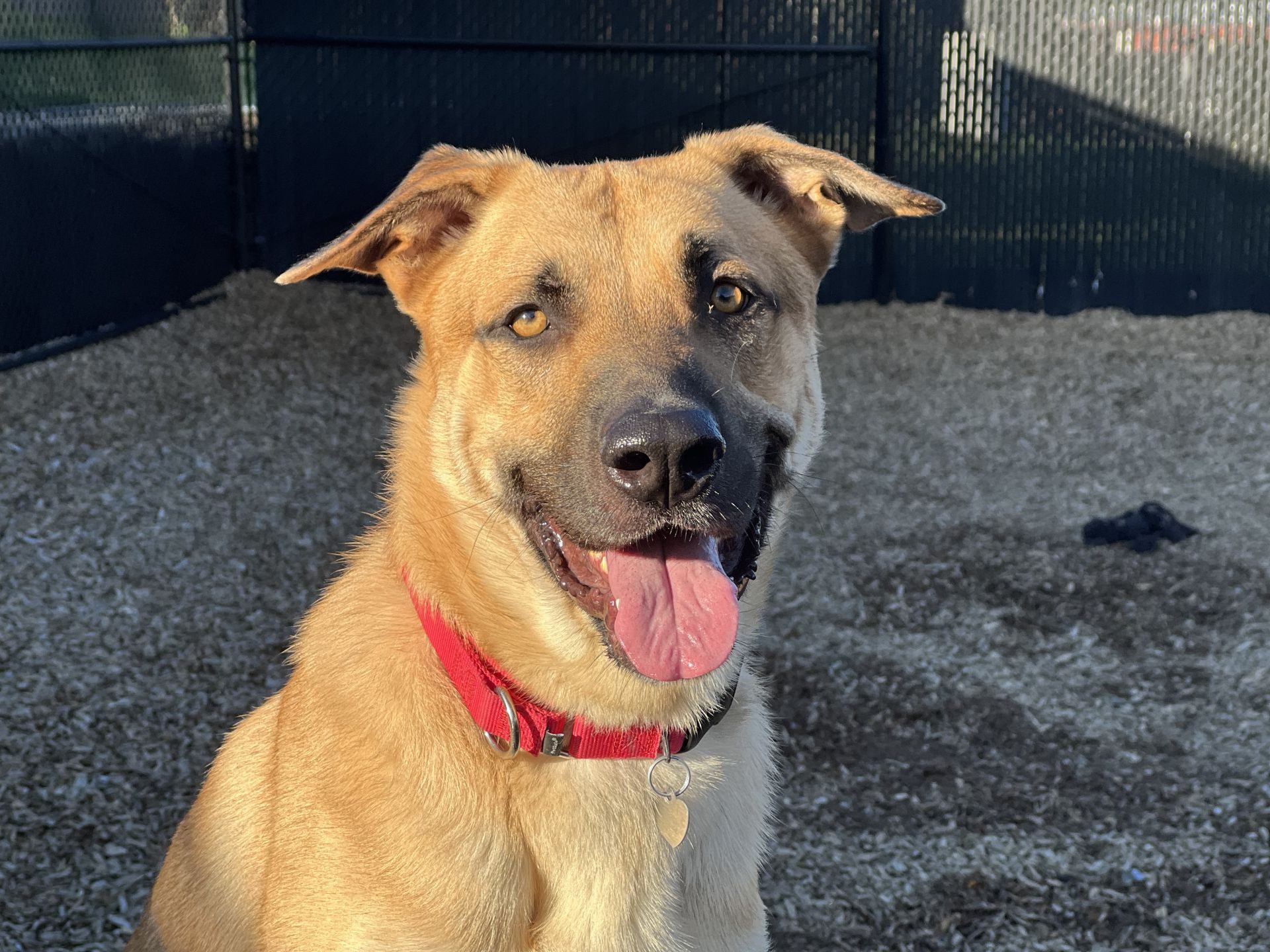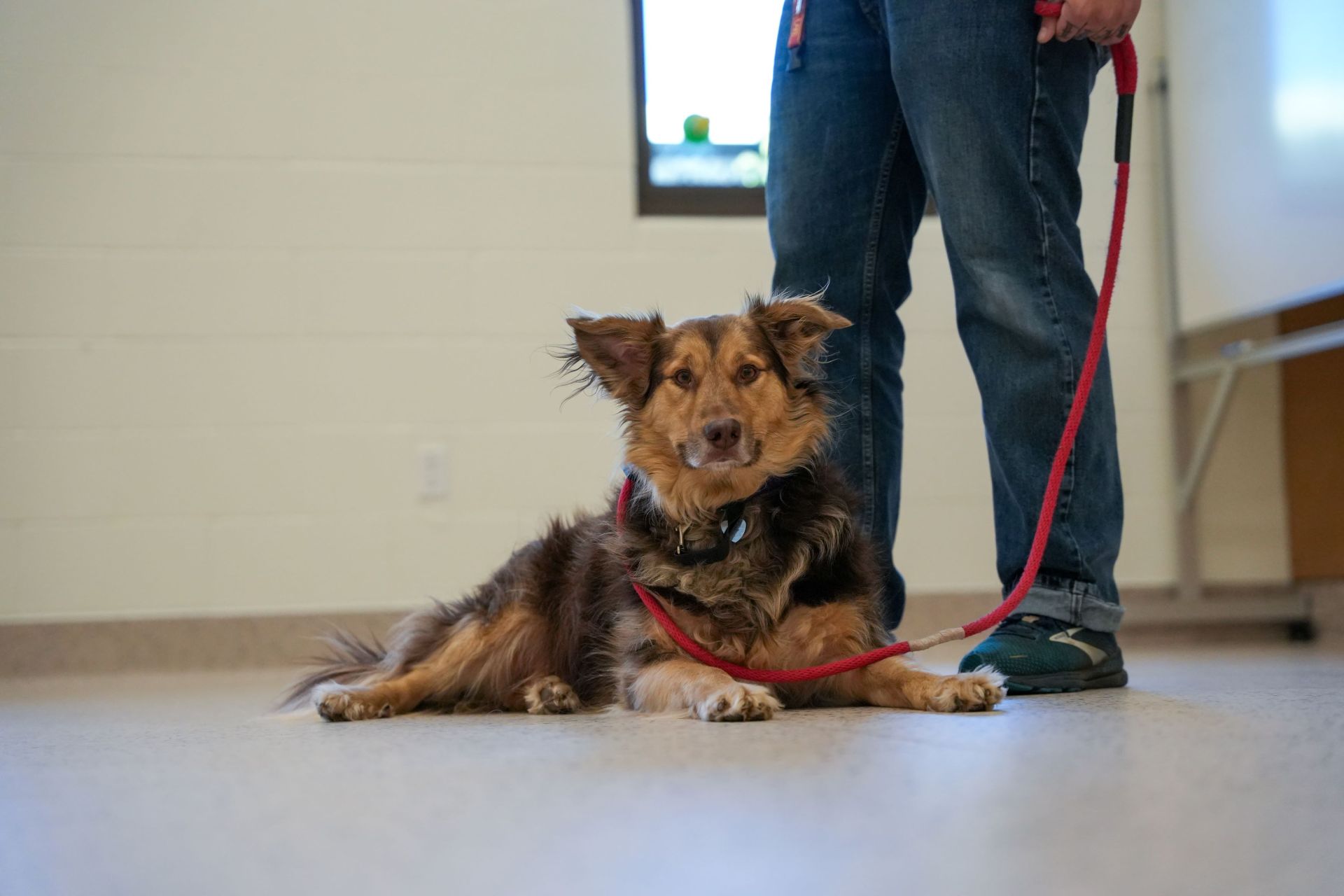How to Channel Your Dog’s Energy
If you have a young, energetic dog, you know how challenging it can be to channel their energy in positive ways. You may think they always need to be “doing something” like fetching, walking, or playing. But, training your dog to do nothing, or settle, is one of the most valuable skills they can learn.
Annika Howland, OHS Behavior Modification trainer, shares why teaching your dog the “art of doing nothing” can improve your relationship with your pet and prevent frustrating behaviors.
Misconceptions about Young, Energetic Dogs
Most people assume that a high energy dog needs to be exercised until they’re exhausted to live a happy life. We’ve all heard the saying, “a tired dog is a happy dog.”
While higher energy dogs do need outlets for their energy, running them until they’re too exhausted to move is very dangerous and can create bigger problems. If your energetic dog is destructive, frenetic, and/or anxious when not exercised, and then you take them out until they’re too tired to move, what we inadvertently end up doing is creating a stronger dog with a higher endurance level. It’s like creating an Olympic athlete who can’t relax and will need more and more exercise to seem calm.
There is a big difference between a dog who can relax and a dog who is exhausted. Teaching a dog “to do nothing” is teaching them to self-regulate their emotions and relax. Being in a constant state of “go go go” can be a form of anxiety that no amount of exercise will relieve. This is why we pair training, enrichment, environment, and exercise to meet all of our dog’s needs for total animal welfare.
Just like humans need to be able to self-regulate and be comfortable being bored, it is also important for our pets to be comfortable when there is “nothing to do.”
The goal is to teach the dog how to let go of frustrated or hectic energy and relax on their own and to teach deep relaxation, not merely calm behavior.
Most people envision a dog asleep at our feet during work from home hours, tucked under the table while sitting at a café, or calmly hanging out while we watch a movie. Most people assume this is a behavior that dogs will naturally understand and do when we are seeking moments of relaxation, but often it needs to be taught.
The level of difficulty lies in the skills, patience, and motivation of the trainer, not the behavior itself. It’s important to understand how something works, why it works, and how to problem solve in order to be successful. Since a physical behavior such as “sit” or “down” has an objective goal for any participant and handlers can help lure dogs into this behavior, it may seem “easier.” Teaching a pet to settle may be more time consuming, but not more or less difficult.
Teaching a dog to be calm and settle can be very boring work. There is no flashy “ta-da” moment, it is a lot of sitting and doing nothing.
Routine, structure, and predictability can help our dogs find settling easier.
A lot of what we do in BMOD is ensure we’re meeting the dog’s biological need for exercise and enrichment and then implement training with impulse control exercises, crate training, “place” on a dog cot, and duration work with the 3 D’s (distance, duration, and distraction).
No one thing is going to teach your dog to be calm and settled in all situations, it takes pairing training on top of settle protocol to truly reach our goals
Training Your Dog
Teach your dog to settle with this step-by-step guide.

Case Files: Teaching Hank to Settle
Hank came to OHS from Josephine County Animal Services. At 86 pounds, this three-year-old shepherd mix had a larger-than-life personality and endless energy.
The constant activity and stimulation in the main shelter was a lot for Hank and he struggled to relax.
His constant state of exuberance also made it difficult to find the right adopter.
A little more than a month after he arrived, Hank was moved over to the Behavior and Rescue Center and became part of the Behavior Modification Program. He began working with trainers who focused on one of his biggest challenges—learning to relax.
OHS trainer Sophia Sares developed a special connection with Hank and began working one-on-one with him. She focused on ignoring his attention seeking behaviors when it was time to do nothing, rewarding him when he settled, and then sporadically drawing out the length of time in between the rewards while he remained relaxed.
“Timing was key when teaching Hank to settle, says Sophia. “We needed to make sure we were rewarding him when he was relaxed, not just calm. We didn’t want to inadvertently reward any antsy behavior because then Hank would think that being on the brink of “no chill” is the ticket to cookies.”
After several meetings and training sessions with a potential adopter, Hank went home on the last day of 2023.








